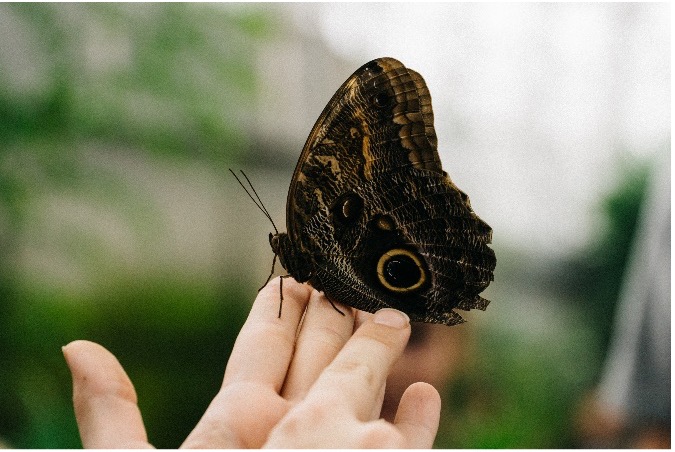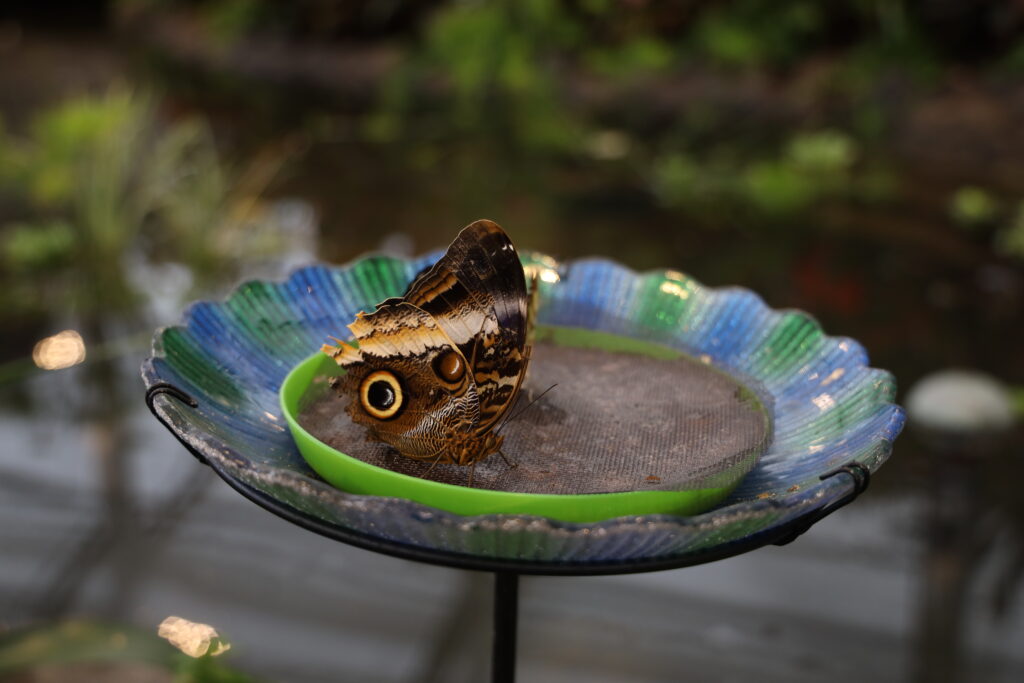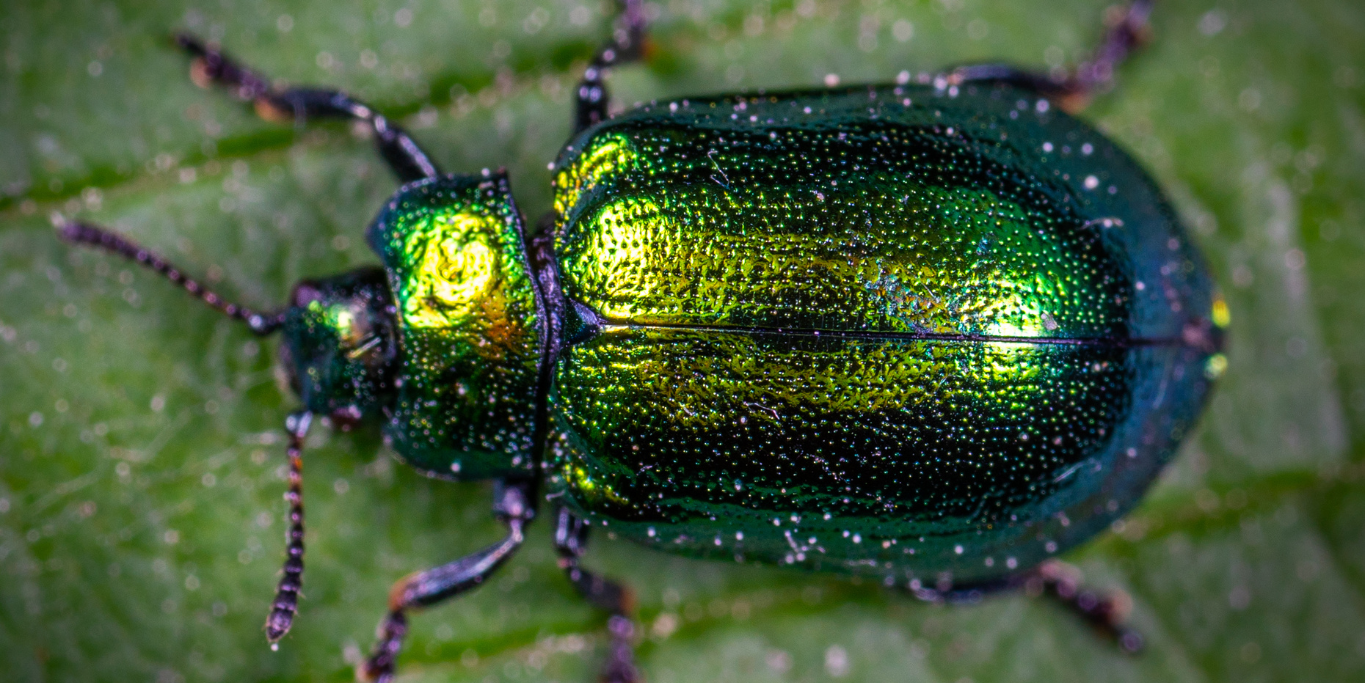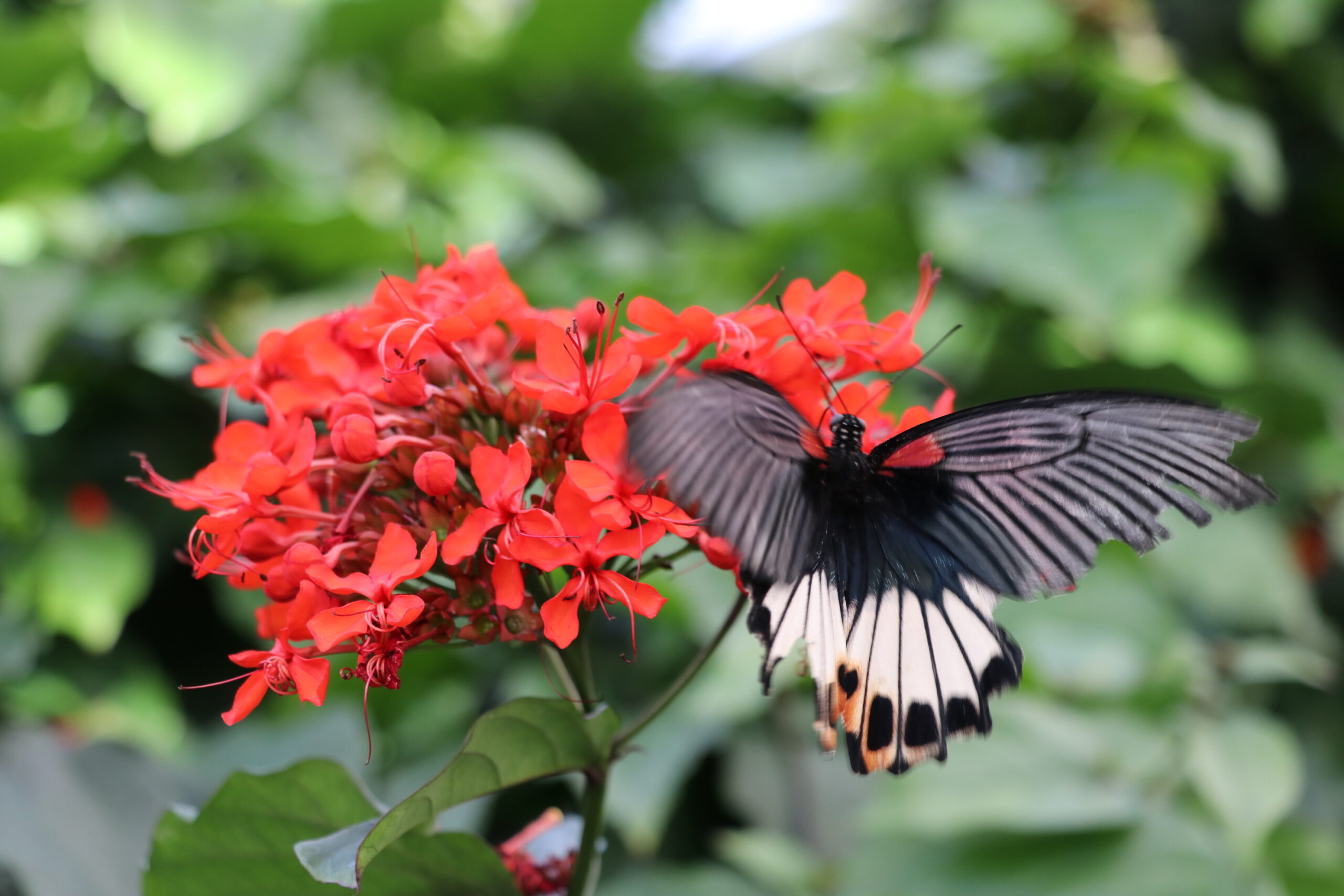When you visit the Butterfly Biosphere on Thanksgiving Point’s campus, you’ll get to enter the Beverly Taylor Sorenson Butterfly Conservatory. Home to thousands of butterflies in stunning varieties, this rare opportunity allows visitors of all ages to get up close and personal with these graceful critters. One of the most well-known and easily-spotted butterflies in the Conservatory is the Owl Butterfly, named for the owl eyes staring at you on the bottom half of their wings.

Owl Butterflies are of the Caligo genus and are native to the forests of Mexico, Central America, and South America. They also love to hang around banana crops and other agricultural areas for easy access to their favorite fruit juices.
As caterpillars, owl butterflies are quite large and long. They can reach up to 15 centimeters in length! They are similar in color to their butterfly form, but they have a red head with thick horns at the top and forked tails. These caterpillars also love feasting on sweet juices, taking their sugary flavor preferences all the way through the metamorphosis process with them.
Out of the chrysalis, you begin to see the eyes on the wings that imitate those of an owl. But that is not where the similarities between the two flighty creatures end. Owl Butterflies are also more nocturnal creatures and are most active at dusk. Because of their size, they can only fly a few feet at a time. Unfortunately, this makes them easy prey – so, they fly in the evening and at night because predators are less likely to be hunting during dark hours.

They may be easy for us to spot, but the woody brown and beige wings of these butterflies help camouflage them in their natural habitat. Those classic owl eyes also serve as a defense mechanism for animals who attempt to snack on them. The design on their wings can make an impressive disguise and may even convince predators that the butterflies are predators themselves. But, if the butterfly-eaters are not deceived and still try to attack the insects, they won’t get what they aimed for. Predators like to go straight for the head. The owl eyes on the wings of these butterflies confuse other animals into thinking the head is the wing. So, even if they do get bitten, they may still be able to escape depending on the wing damage.

In the Butterfly Biosphere, owl butterflies don’t need to worry about predators. It is safe to say they spend their days slurping up fruit juice and engaging in fights with other males in hopes of securing a mate. These friendly creatures love to land on the fingers of calm and patient visitors and may even sit on your shoulder for a short break through the ferns.
If you visit the Biosphere and Conservatory in the evening, you’ll be able to see Owl Butterflies flying around and several other of our butterfly friends resting on the leaves and branches. Be sure to chat with an Explorer to learn more about these marvelous flyers!


